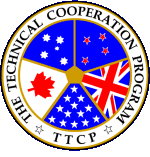




| CoAX |
|
Supported by The Technical Cooperation Program,
United States Air Force Research Laboratory/Information Directorate,
Rome Research Site,
Defense Advanced Research Projects Agency,
and the UK Defence Evaluation Research Agency.





| CoAX |
|
Supported by The Technical Cooperation Program,
United States Air Force Research Laboratory/Information Directorate,
Rome Research Site,
Defense Advanced Research Projects Agency,
and the UK Defence Evaluation Research Agency.